Last year, we launched the first activities of an ambitious project to develop beekeeping in the communities of Makay. Following an assessment of the beekeeping potential of the massif and a presentation of the project to local communities, the first beekeepers travelled to Manakara for training and the first hives were installed in autumn 2018. An update on the progress of the project one and a half years after the start of the project.
The project in figures
As of 2 July 2019:
- 29 beekeepers involved
- 4 pioneering beekeepers who became project referents
- 51 hives installed
- 38 kg of honey collected
- 7 action sites in the district of Beroroha
- 1 project leader: Zo (Herizo)
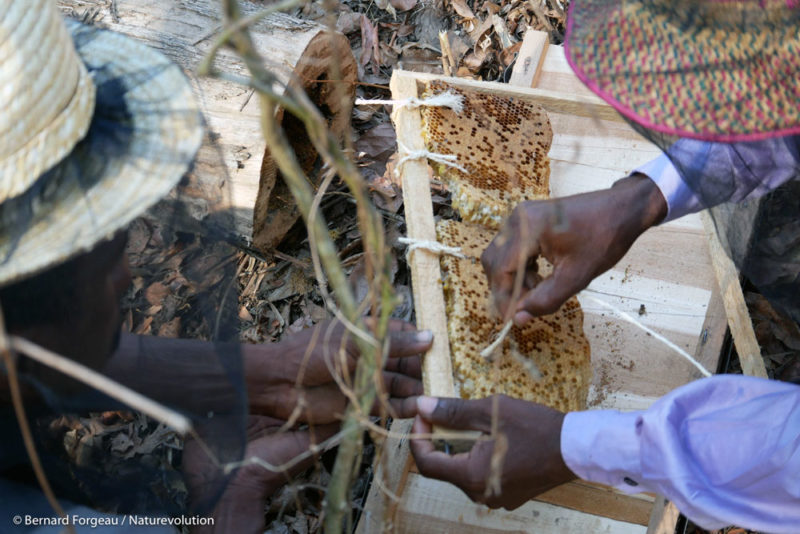
October – Installation of the first hives
Following the training of 4 pioneer beekeepers in Manakara, a mission was conducted to monitor the transmission of knowledge and set up the first hives.
- In Beroroha, an association of beekeepers – Fikambanan’ny Mpiompy Tantely Mampiroboronono ny Fanatanjahantena sy ny Zavankato – was created on the initiative of beekeepers in return for training. The project was announced on local radio. Fields are visited for the establishment of hives, including a school apiary. Transfers from traditional hives are assessed, planned and even carried out. The local production of hives is started, with about ten hives built at the end of the mission. Several traditional hives and wild swarms are transferred to Beroroha and the surrounding villages (Beroroha-Est, Betamenaky, Soatanana) where several beekeepers are interested. About 20 hives are active at the end of the mission.
- In Tsivoko and in the Menapanda Forest, beehives were built during the summer by eco-volunteers. More hives are built, and swarm-catching hives are placed in the forest. Awareness-raising and demonstration activities are carried out because villagers, although interested in the project, need to be more convinced before embarking on it.
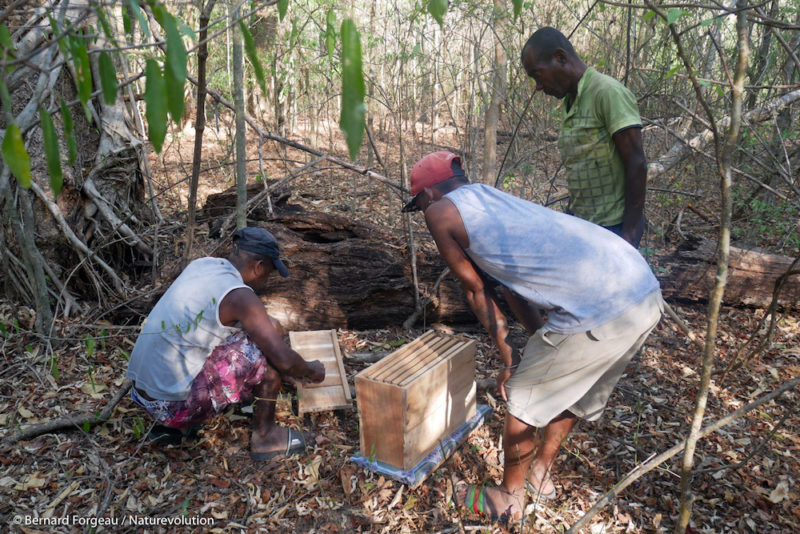
November – Follow-up mission
A month later, the team returned to the field to monitor the active hives (24 hives and hive bodies) and plan the next transfers.
- Hives are distributed to all members of the Beroroha Beekeepers Association, and there are rules for all beekeepers to participate in the school apiary. Trainings are held every day, and a 20-minute film, edited after the training in Manakara, is shown.
- In Tsivoko and Menapanda Forest, new hives are being made and placed in the forest. Hive transfers and formations continue.
- New hives could be set up during a future mission on the Kalambory side, a village located between Beronono and Tsivoko, near the Makay River where a family would own between 5 and 20 traditional hives.
It was during this mission that varroa was identified for the first time at several sites around Beroroha. Some hives have a lot of them. A treatment mission is quickly planned to deal with it.
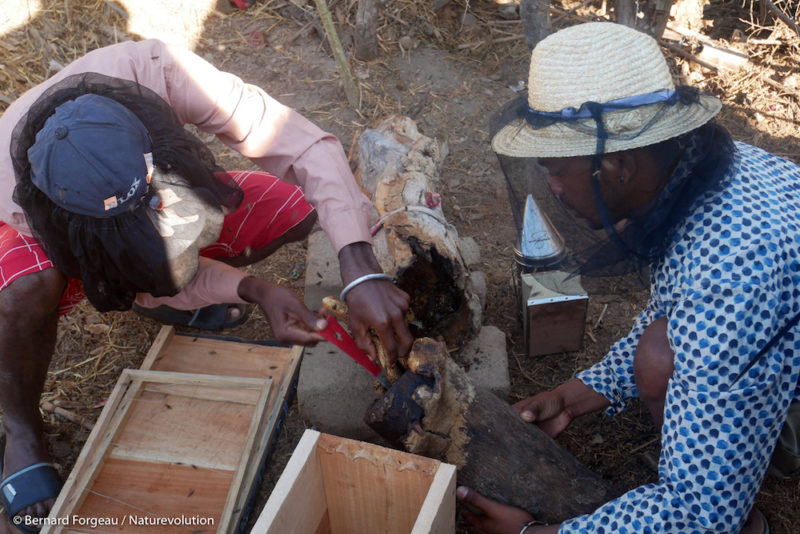
December – Treatment of Varroa
Following the discovery of varroa in some of Beroroha’s hives, Zo, the new project coordinator, returned to the field to treat the affected hives.
January 2019 – New lineup for Zo
Zo then returned to the Ruches Australes in Manakara to complete his training, especially around the treatment of bees against varicose veins and to perfect his transfer techniques that he will then have to pass on to the field.
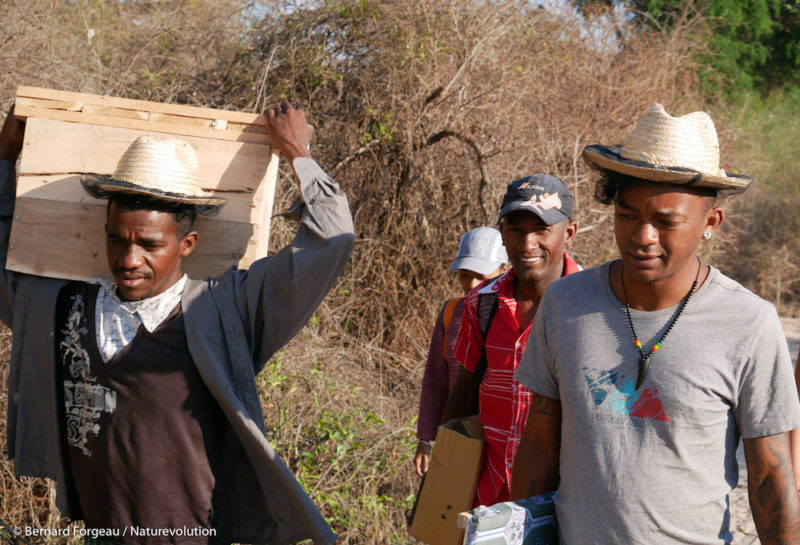
February – New follow-up mission
Two months after varroa treatments, a check of the hives was performed and a decrease in varroa was observed. The remainder of the mission was spent on meetings with beekeepers, building new hives and continuing to capture new swarms.
- Beroroha remains the heart of the project with the construction of a school hive and a very important beekeeping centre. New villages near the town of Beroroha are also visited for the first time: Ankatoky, Ankoakala and Ambalabe. The inhabitants support the establishment of nurseries in parallel with the beekeeping project.
- In Tsivoko a large meeting brought together more than 29 beekeepers. Each of them ‘owns’ swarms in the forest (wild swarms are sometimes the ‘property’ of the individual who discovers them) and wish to be part of the project. Formations began in early March and some swarms were captured and placed in hives.
- In the forest of Menapanda, swarms have been collected within the 4 installed hives and transferred to hives.
Generally speaking, beekeepers need more training before becoming self-sufficient. Demand from local communities is also increasing, indicating that the project is well established and well received by local communities.
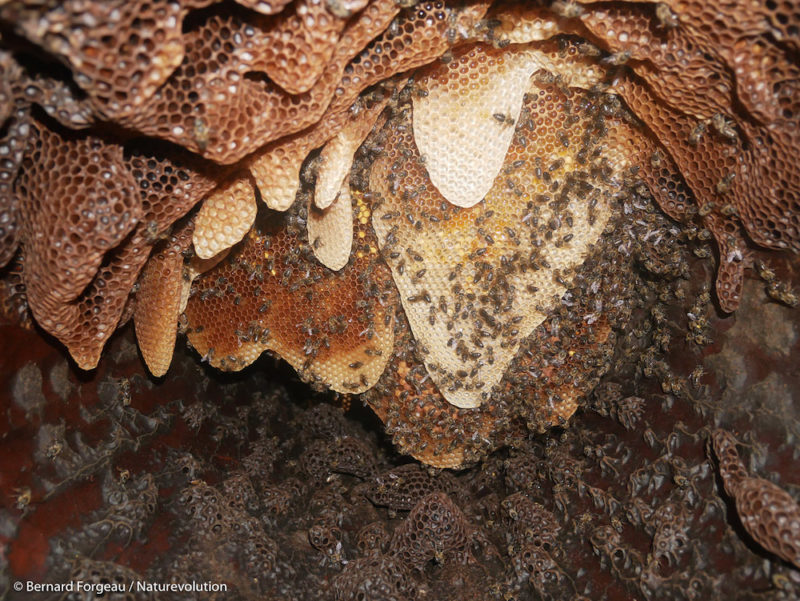
The sites of settlement of hives
Beehives are now installed at 7 sites in the Beroroha district of South Makay. Click on the map below to zoom in :
June – First honeycomb
A first honeycomb harvested 24 litres of honey during the month of June. We’ll talk about it in the next article !
Il est toujours possible de soutenir le développement de l’apiculture dans les communautés riveraines du Makay ! Votre don permettra de financer les prochaines missions de Zo sur le terrain, la formation de nouveaux apiculteurs, la construction et l’implantation de nouvelles ruches, la mise en place des pépinières à proximité des ruchers, et l’extension du projet à de nouveaux villages. Une belle action qui oeuvre à la fois en faveur de la protection de la biodiversité du Makay et du mieux-vivre des communautés locales ! 👇👇👇
Pour mieux comprendre comment ce projet s’insère dans notre programme de conservation des forêts du Makay, nous vous recommandons les lectures suivantes :
- Les activités menées au premier semestre 2018 dans le cadre de ce projet, comprenant notamment un bel état des lieux de l’apiculture existante et de son potentiel pour les communautés du Makay,
- La formation des apiculteurs durant l’été 2018 au site des Ruches Australes à Manakara en vidéo,
- Les points clés et les enjeux de ce projet pilote de développement de l’apiculture dans le Makay,
- L’apiculture à Madagascar, une ouverture sur le monde apicole malgache.
__

Merci à nos partenaires : ce projet a reçu le soutien de l’Agence des Micro Projets, une initiative de solidarité internationale de La Guilde financée par l’AFD. Il est également rendu possible grâce à l’engagement de la fondation Insolites Bâtisseurs – Philippe Roméro, de la société de conciergerie d’entreprise bien être à la carte, et des nombreux donateurs individuels qui l’ont soutenu sur notre campagne de crowdfunding.


